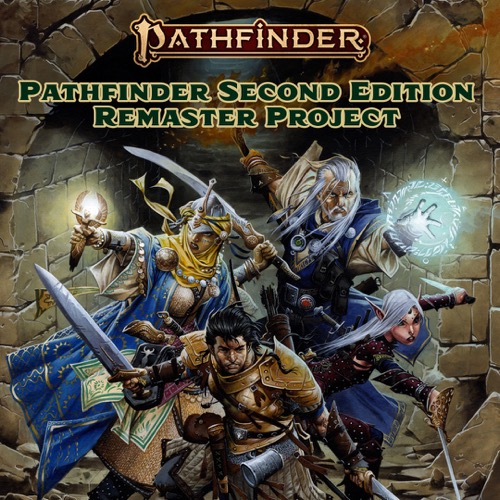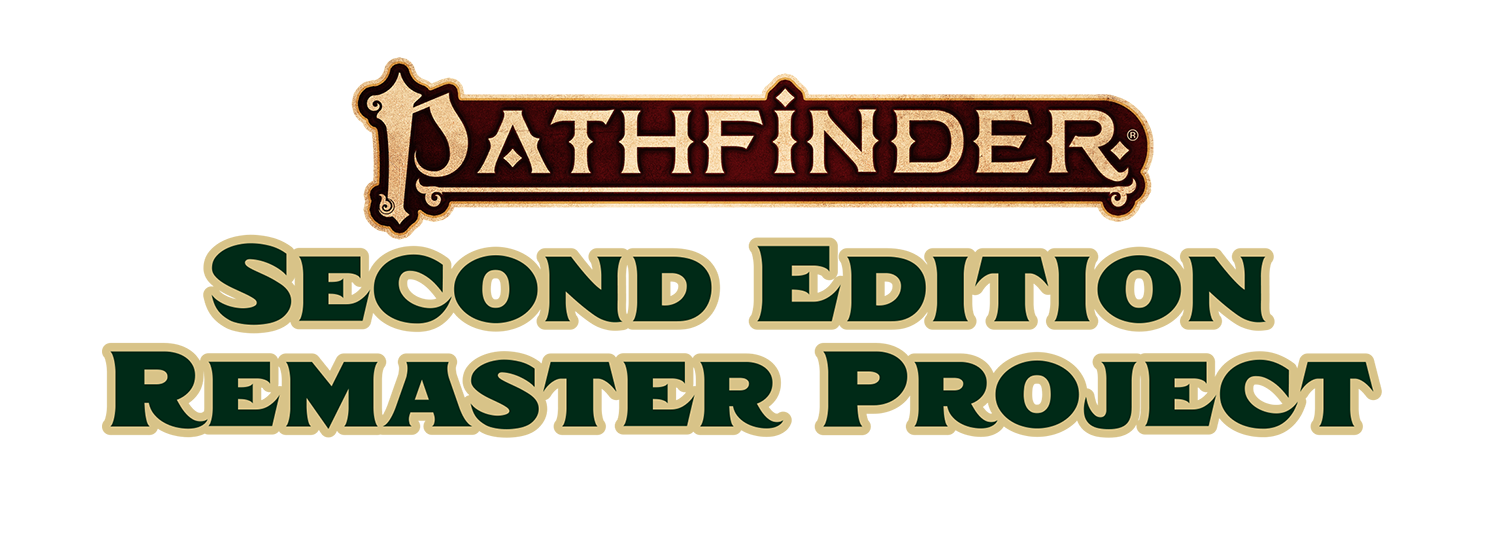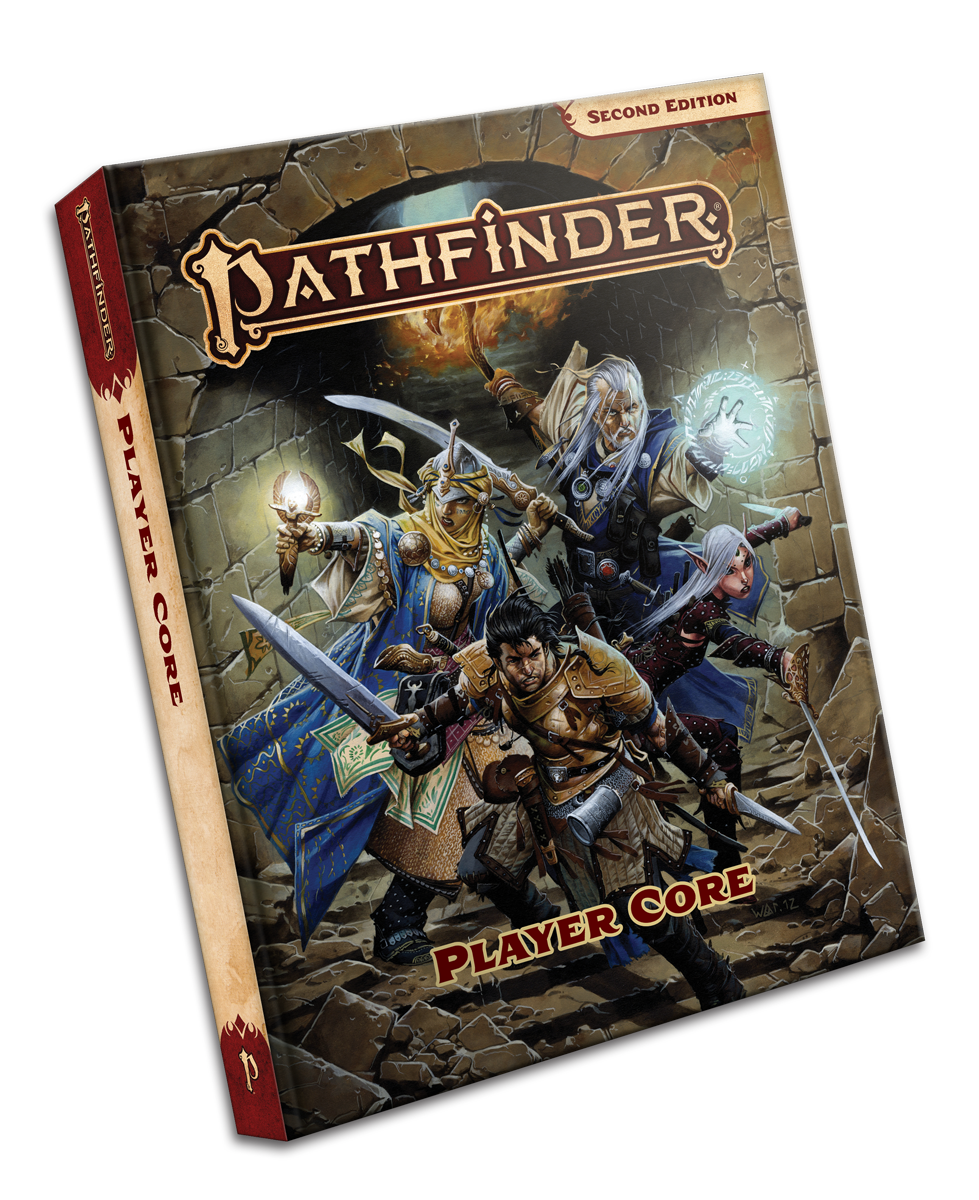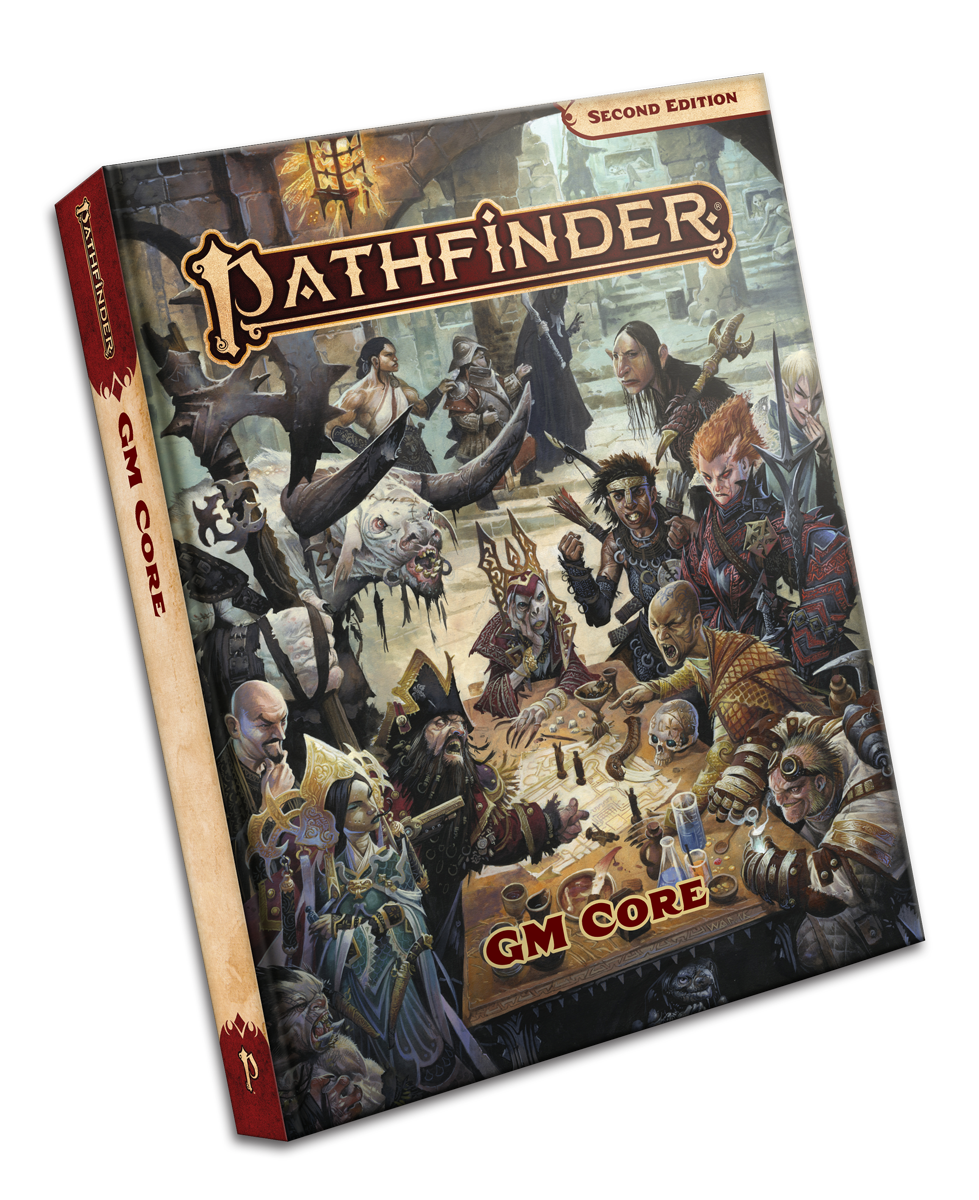Today, we are pleased to reveal the Pathfinder Second Edition Remaster Project, four new hardcover rulebooks that offer a fresh entry point to the Pathfinder Second Edition roleplaying game! The first two books, Pathfinder Player Core and Pathfinder GM Core, release this November, with Pathfinder Monster Core (March 2024) and Pathfinder Player Core 2 (July 2024) completing the remastered presentation of Pathfinder’s core rules. The new rulebooks are compatible with existing Pathfinder Second Edition products, incorporating comprehensive errata and rules updates as well as some of the best additions from later books into new, easy-to-access volumes with streamlined presentations inspired by years of player feedback.
This year saw a huge explosion of new Pathfinder players. Remastered books like Pathfinder Player Core and Pathfinder GM Core improve upon the presentation of our popular Pathfinder Second Edition rules, remixing four years of updates and refinements to make the game easier to learn and more fun to play.
In time, the Pathfinder Player Core, Pathfinder GM Core, Pathfinder Monster Core, and Pathfinder Player Core 2 will replace the Pathfinder Core Rulebook, Gamemastery Guide, Bestiary, and Advanced Player’s Guide, which Paizo will not reprint once their current print runs expire. Existing Pathfinder players should be assured that the core rules system remains the same, and the overwhelming majority of the rules themselves will not change. Your existing books are still valid. The newly formatted books consolidate key information in a unified place—for example, Pathfinder Player Core will collect all the important rules for each of its featured classes in one volume rather than spreading out key information between the Core Rulebook and the Advanced Player’s Guide.
The new core rulebooks will also serve as a new foundation for our publishing partners, transitioning the game away from the Open Game License that caused so much controversy earlier this year to the more stable and reliable Open RPG Creative (ORC) license, which is currently being finalized with the help of hundreds of independent RPG publishers. This transition will result in a few minor modifications to the Pathfinder Second Edition system, notably the removal of alignment and a small number of nostalgic creatures, spells, and magic items exclusive to the OGL. These elements remain a part of the corpus of Pathfinder Second Edition rules for those who still want them, and are fully compatible with the new remastered rules, but will not appear in future Pathfinder releases.
In the meantime, Pathfinder’s remaining projects and product schedule remain as-is and compatible with the newly remastered rules. This July’s Rage of Elements hardcover, along with the Lost Omens campaign setting books and our regular monthly Adventure Path volumes, continue as planned, as does the Pathfinder Society Organized Play campaign, which will incorporate the new rules as they become available.
Learn more with our FAQ here or read it below
Is this a new edition of Pathfinder?
No. The Pathfinder Second Edition Remaster Project does not change the fundamental core system design of Pathfinder. Small improvements and cosmetic changes appear throughout, but outside of a few minor changes in terminology, the changes are not anywhere substantive enough to be considered a new edition. We like Pathfinder Second Edition. You like Pathfinder Second Edition. This is a remastered version of the original, not a new version altogether.
Are my existing Pathfinder Second Edition books now obsolete?
No. With the exception of a few minor variations in terminology and a slightly different mix of monsters, spells, and magic items, the rules remain largely unchanged. A pre-Remaster stat block, spell, monster, or adventure should work with the remastered rules without any problems.
What does this mean for my digital content?
Paizo is working with its digital partners to integrate new system updates in the most seamless way possible. The new rules will be uploaded to Archives of Nethys as usual, and legacy content that does not appear in the remastered books will not disappear from online rules.
We will not be updating PDFs of legacy products with the updated rules.
Will the Pathfinder Second Edition Remaster books be part of my ongoing Pathfinder Rulebooks subscription?
Pathfinder Second Edition Remaster books will be included in ongoing Pathfinder Rulebooks subscriptions. We are currently working on a method whereby existing subscribers will have the opportunity to “opt out” of these volumes if they wish and will provide additional details as we get closer to the release of the first two volumes.
What impact will the Second Edition Remaster have on Pathfinder Society Organized Play?
We are working closely with our Organized Play team to seamlessly integrate new rules options in the upcoming books as those books are released, as normal. In the rare case of a conflict between a new book and legacy source, campaign management will provide clear advice with as little disruption as possible to player characters or the campaign itself.
Will there be more Remastered Core books to come? What about Monster Core 2 or Player Core 3?
It’s very likely that we will continue to update and remaster the Bestiaries in the future, but for now we’re focusing on the four announced books as well as Paizo’s regular schedule of Pathfinder releases. Publishing 100% new material remains Paizo’s primary focus, and we look forward to upcoming releases like Pathfinder Rage of Elements, the Lost Omens Tian Xia World Guide and Character Guide, our monthly Adventure Path installments, and other exciting projects we have yet to announce.
Will the new Pathfinder Second Edition Remaster books have Special Editions?
Yes. We are looking into various exciting print options for these books and will post more information soon.
Will the new Pathfinder Second Edition Remaster books have Pocket Editions?
Yes. Pocket editions of the new books will appear roughly three months following the hardcover releases.
Will these changes impact the Starfinder Roleplaying Game?
Not yet.
How can I learn more about the Pathfinder Second Edition Remaster books?
To learn more about the Remaster books, check out our live stream chat about the announcement happening later today on Twitch. Beyond that, we’ll be making a handful of additional announcements in the coming days and weeks to showcase more about this exciting project, culminating in your first full look at the project during PaizoCon (May 26th–29th)!
Pathfinder Second Edition Remaster Project!
Wednesday, April 26, 2023









